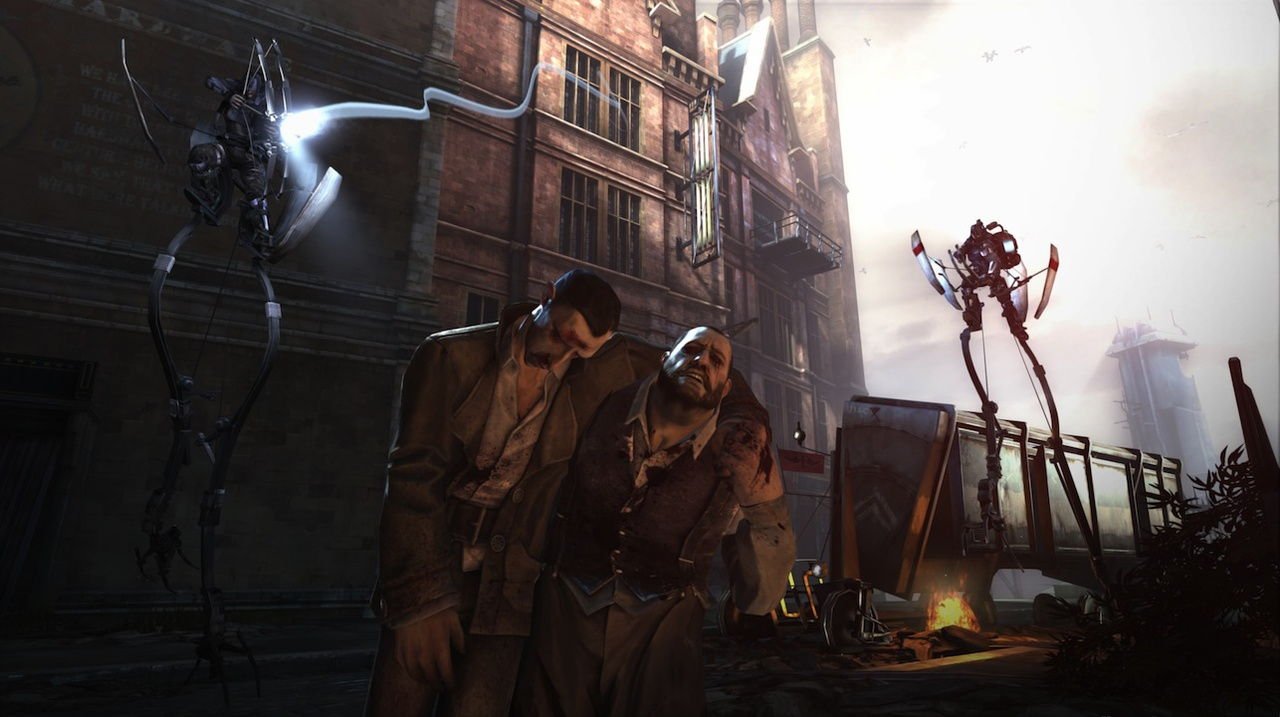Dishonored review
Welcome to Dunwall—a dank, grim city slowly succumbing to the Rat Plague. Rabid rodents roam the streets in swarms as the populace slowly sinks into madness, forced to hide and pray while the wasting effects of the plague destroy everything in this once-great imperial capital.
This is the world of Dishonored. It is beautiful in an odd way, full of steampunk elements reminiscent of the grimiest glimpses of Industrial Revolution-era London. Arkane Studios embraced the genre for their game, a kind of mystic-stealth action-puzzler—in short, a hybrid of many things that hadn’t been successful done since the early games in the Thief series.
This careful, meticulous tactic is how I approach any RPG, and I know that I would love this game from the moment I first saw it.
Immersive (sim) experience
When Dishonored released in 2012, it felt a bit like a stealth-launch. (And no, that isn’t meant to be ironic.) Not many people purchased the game that first winter, but I got lucky—my mom found it on a Black Friday sale for $20, and it was the first game I started after Christmas. I was immediately swept away, caught up in Corvo’s quest for answers and justice.
With Dishonored 2’s recent release, I thought it only appropriate to replay its predecessor.
Corvo Attano returns from something of an ambassadorial venture, sailing home to meet with the empress—a woman who is much more than just his liege. You see, Corvo is the Lord Protector, charged with safeguarding Empress Jessamine and her daughter, Emily.
…but when Corvo greets his somewhat-surrogate family, he finds himself in the middle of an assassination attempt. The empress is killed, Emily is kidnapped, and Corvo is blamed for both and sentenced to death.
The game snowballs from this point, and I can’t really dive into the different characters without spoiling major plot points. Needless to say, Corvo winds up in the middle of a civil uprising with loyalists who seek to rescue Emily and see her in her mother’s throne, while the current leadership—the ones who arranged for the empress’ assassination—strive to solidify their hold on Dunwall.
Making things personal
For Corvo, every single moment of this game is personal, and that creates a perfect mixture to drop in the last component—me, the player.
No two people see justice (or revenge) in the same way, and that’s the true beauty of Dishonored. The game embraces versatility, providing a handful of ways to complete any mission. Should I run into a building like an angel of death, sprinting and slaughtering the guardsmen who protect the men behind the empress’ death? Or do I sneak in, making a deal with local thugs to find a secret back entrance? Or perhaps I use one of my magic powers, possess a rat, and slip in through a hole in the wall? The game imposed no limits on my approach to missions.
(In fact, Dishonored actually encourages players to break the game. If I find a way to climb a building and jump over a guarded wall, I will be rewarded just as if I’d taken one of the “normal” routes in.)
Each scenario can be beaten in multiple ways, using multiple skills, but they can also be completed with low chaos (a focus on stealth) or high chaos (a focus on efficiency). My choices as Corvo affected the world in visceral ways: more dead bodies results in more rats, which attack me and others, which spreads the Plague, and so on. It’s an endless cycle, and how I pursued my vengeance was a major cog in the game’s end-state.
I’ll say this: my second playthrough was hugely different than my first. Both the setting and difficulty of the final mission varies, and the closing cinematic felt like an entirely different game.
A Victorian oilpunk dystopia
Visually, the game is very atmospheric, practically smothering players in the steampunk world. Music and audio cues keep a level of intensity, and the jump-scares throughout are reminiscent of the Bioshock series. The first-person perspective adds to the immersion, as do the graphic deaths—assassinations are intense and cathartic (I was on a vengeful warpath, after all), rat attacks are gruesome, and most of the people are deplorable and lawless as their civilization crumbles around them.
It’s hard to peg down the mechanics and gameplay aspects. Dishonored combines magic, ranged attacks, traps, swordplay, stealthy navigation of puzzles, and a whole lot more. The game really is an amalgamation, and the result is a hugely satisfying game that molds itself to individual play styles; in the end, that just adds to the “custom-tailored” feel of this unique and compelling adventure.
Author’s note: With Dishonored beaten, Dishonored 2 is on the docket for “Games to Play Really Soon”—I won’t give myself an exact deadline, but I’m sure I’ll be posting a review in the coming weeks.
In a nutshell
Dishonored didn’t revolutionize video games, but it did revitalize the long-stagnant action/stealth sub-genre. The game knocked me on my butt with its combination of emotionally-driven narrative, satisfying missions, and rewarding stealth systems, and I literally can’t wait to start Dishonored 2 and see what new surprises and challenges Arkane Studios has in store for me.
Pros
+ Environmental puzzles
+ Open-ended missions
+ Enrapturing story
+ Cathartic ending
Cons
- Hand-to-hand combat
- Inconsistent AI behavior



